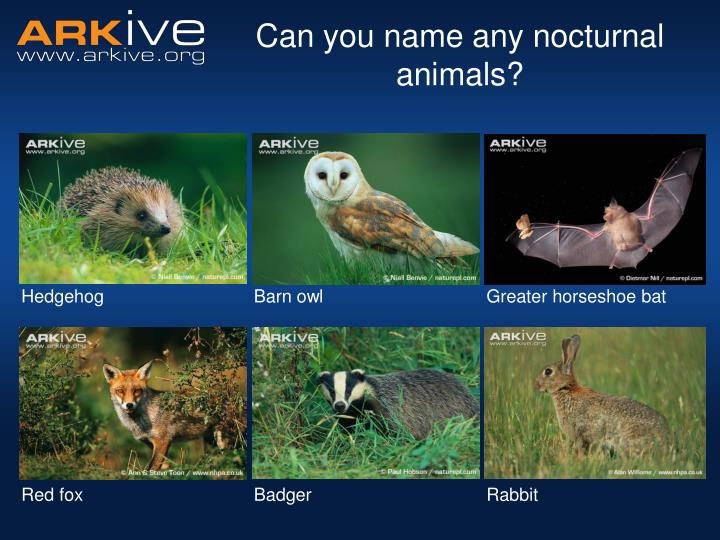

Over 60 percent of all known species are nocturnal and those that are diurnal need naturally dark environments to recover from daily activity.

Red-shouldered hawks are considered the diurnal counterpart to the nocturnal barred owl, hunting the same territory by day the barred owl hunts after dark. WILDLIFE enthusiasts can catch a glimpse of one of Britain’s most elusive nocturnal animals – all from the comfort of their own armchair. Still, electric lighting was such a perfect complement to the beauty, urbanity and wide streets of Paris that poet Marianne Moore once referred to France as “the chrysalis of the nocturnal butterfly.” ( The Hartford Courant)

It licensed me, after all, to explore the nocturnal city’s uses and abuses, from the middle ages on, not only in the corridors and stacks of libraries but in the alleys, lanes and streets themselves. Nocturnal and diurnal are direct opposites. The word diurnal comes from the Latin word diurnalis, which means daily. Diurnal is an adjective, the adverb form is diurnally. The word nocturnal comes from the Latin word nocturnus, which means belonging to the night.ĭiurnal describes happenings that occur during the daytime or plants and animals that are active during the daytime. Nocturnal is an adjective, the adverb form is nocturnally. The smallest is the bumblebee bat, weighing just 2 g - that's about two teaspoons of sugar.Nocturnal describes happenings that occur during the nighttime or plants and animals that are active during the nighttime. The largest bat in the world is the gold-crowned fruit bat, with a wingspan of up to 6 feet (1.8 m).British bats also most definitely won't drink your blood.Which means they're unlikely to fly into your hair. They use sonar to detect their prey and other objects in the dark.In fact they're more closely related to monkeys!

If you see a bat flying above the surface of a pond or river, it might be a Daubenton's bat. They can often be seen where there are trees around. Like other bats, pipistrelles are nocturnal, emerging at night for a couple of hours to hunt for insects to eat before returning to their roosts on a house, tree or building. They're tiny, with reddish-brown fur and blackish ears, nose and wings. If you’re patient, you might notice something smaller than a bird flitting hurriedly across the sky. Look up at dusk, when there’s still some light in the sky. (Also look out of the car window when you're driving at night.) If you're planning a Big Wild Sleepout in the country, you may be fortunate enough to catch a glimpse of the barn owl's ghost-like silhouette as it glides through the twilight searching for prey. It has a pretty heart-shaped face with a light-brown (almost golden-coloured) back and wings. The barn owl (pictured) is also nocturnal and is mostly found on farmland. Look out for them resting on a favourite perch, or being pestered by other birds in the daytime. Tawny owls can often be found in woodland, parks and gardens, and are around the same size as a pigeon, with a ring of dark feathers around their face, with large, dark eyes. You may be fortunate to hear a tawny owl, our largest common owl, make its famous call.īut did you know that it's the male tawny owl that goes 'twoooo' and the female that goes 'twit'? In June and July they are quiet, but they begin calling again in August. Most are nocturnal, or active at dawn and dusk (the fancy word for that is 'crepuscular'). Owls are specialised birds of prey with round heads and rather flat faces.


 0 kommentar(er)
0 kommentar(er)
